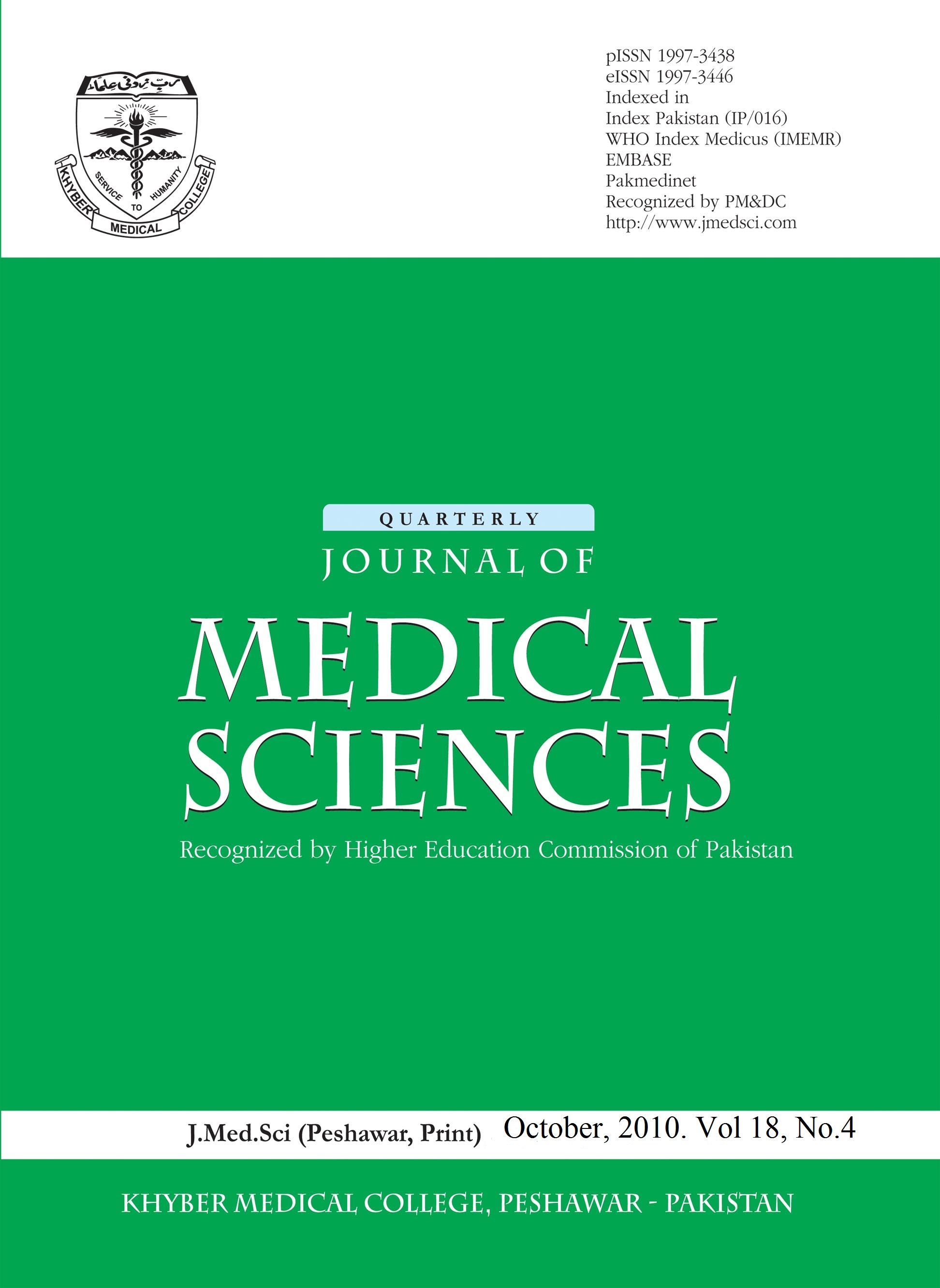ETIOLOGICAL FACTORS OF BRAIN ABSCESS
Main Article Content
Abstract
Objectives: To find out the etiological factors of brain abscesses in patients admitted in Hayatabad Medical Complex,
Peshawar in the year 2009.
Material and Methods: This descriptive study was carried out in the Neurosurgery Units of Hayatabad Medical
Complex, Peshawar from January to December 2009. Forty eight consecutive cases with brain abscesses were
included in the study. Diagnosis of brain abscess was established in all patients with CT scanning. The patients were
evaluated for the predisposing factors.
Results: The study population included 31 males and 17 females. Mean age was 29.2 ± 2.3 years. The predisposing
factors for brain abscess were noted in 43 (89.6%) patients while no etiological factor was found in 5 (10.4%).
Contiguous focus of infection was found in 18 (37.5%) patients, hematogenous spread in 16(33.3%) and direct
inoculation in 9 (18.8%) patients.
Conclusion: Brain abscess is a fatal condition. Every patient with brain abscess should be evaluated for a possible
source of infection. Contiguous focus of infection is the commonest etiological factor. However in a few cases, no
source of brain abscess can be found. Particular attention should be given to the early recognition of etiological
sources and proper prophylactic approach should be adopted to prevent development of brain abscess.
Article Details
All articles published in the Journal of Medical Sciences (JMS) are licensed under the Creative Commons Attribution 4.0 International License (CC-BY 4.0). Under the CC BY 4.0 license, author(s) retain the ownership of the copyright publishing rights without restrictions for their content, and allow others to copy, use, print, share, modify, and distribute the content of the article even for commercial purposes as long as the original authors and the journal are properly cited. No permission is required from the author/s or the publishers for this purpose. Appropriate attribution can be provided by simply citing the original article. The corresponding author has the right to grant on behalf of all authors, a worldwide license to JMS and its licensees in all forms, formats, and media (whether known now or created in the future), The corresponding author must certify and warrant the authorship and proprietorship and should declare that he/she has not granted or assigned any of the article’s rights to any other person or body.
The corresponding author must compensate the journal for any costs, expenses, or damages that the JMS may incur as a result of any breach of these warranties including any intentional or unintentional errors, omissions, copyright issues, or plagiarism. The editorial office must be notified upon submission if an article contains materials like text, pictures, tables, or graphs from other copyrighted sources. The JMS reserves the right to remove any images, figures, tables, or other content, from any article, whether before or after publication, if concerns are raised about copyright, license, or permissions and the authors are unable to provide documentation confirming that appropriate permissions were obtained for publication of the content in question.

